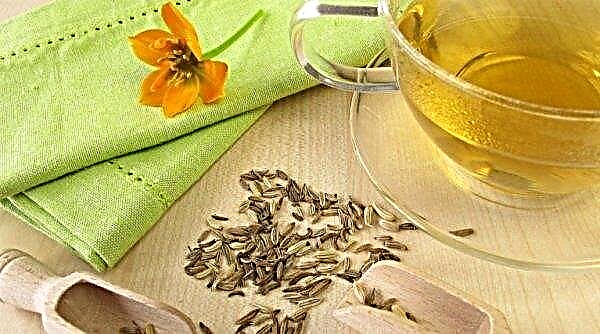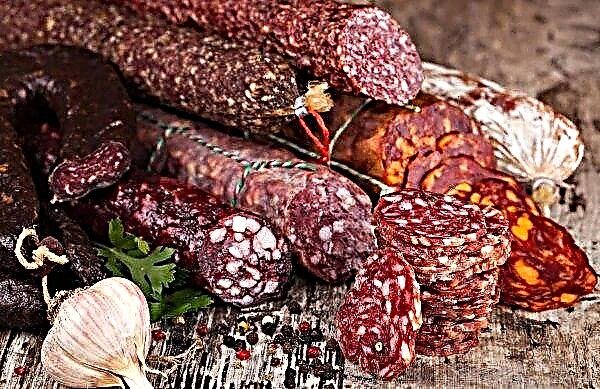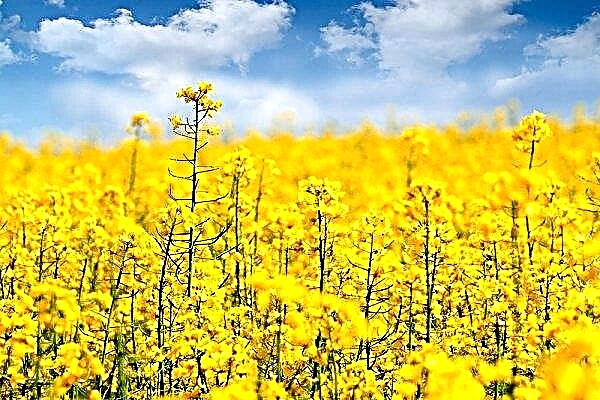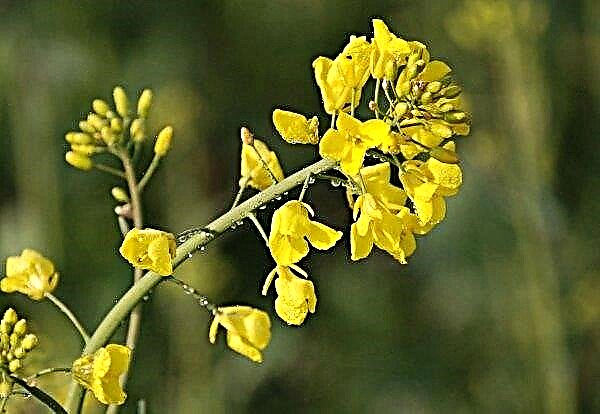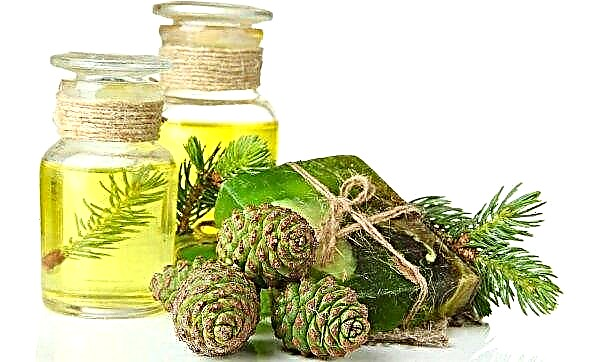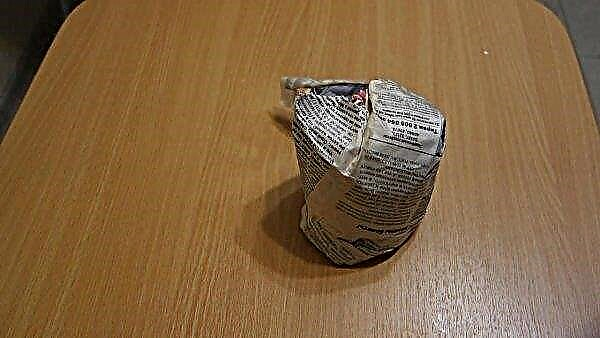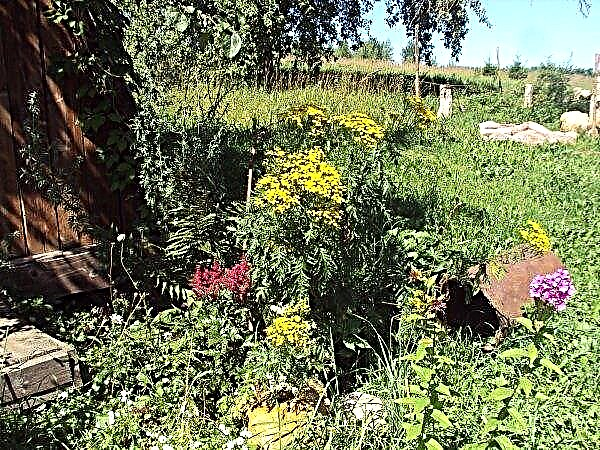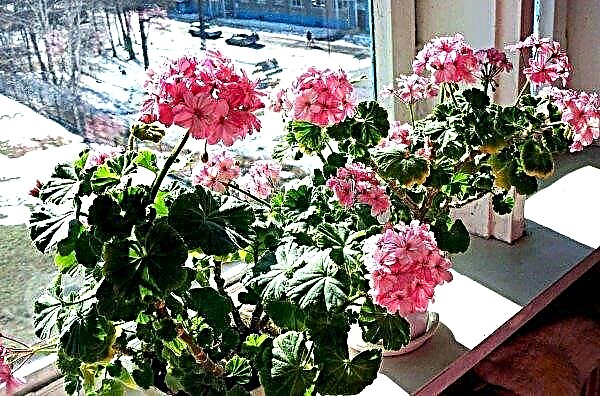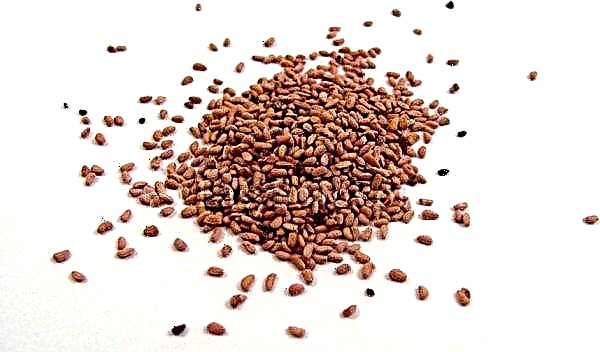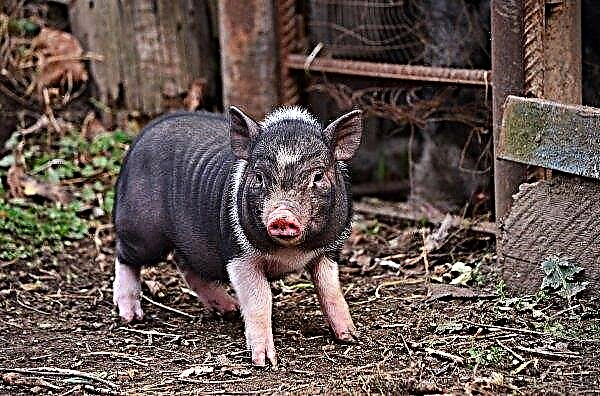Pepper flywheel - a mushroom, in its external characteristics resembling an oiler. Appears in the forest at about the same time. Before picking pepper mushrooms, you should understand in more detail whether it is safe to eat, and also familiarize yourself with the basic botanical characteristics.
Description
Pepper mushroom belongs to the family Polevye. According to Russian sources, it belongs to the genus Maslyonok, and according to English - Chalciporus piperatus.
Did you know? Mushroom body — this is mycelium, which is located under the cover of soil and can occupy areas of tens of kilometers. What grows above the soil level (the fungus itself) is a fruit that has the direct purpose of spreading spores, i.e., multiplying.
Description of the botanical characteristics of the fungus in question:
| Hat | Small, maximum diameter is 7 cm; initially has a hemispherical shape, later it becomes almost flat; it is covered with a brown film that is difficult to detach; the surface of the hat is velvety in dry weather, sticky with a slight increase in moisture, slightly covered with mucus |
| Leg | Thin, with a girth of only 1.5 cm, up to 8 cm high; thickens or slightly bent towards the top; the color is similar to a hat or a tone lighter |
| Gimenofor | Tubular; color similar to a hat; when pressed, acquires a reddish tint |
| Pulp | The structure is flabby; sandy yellow; on the cut, when it comes in contact with air, it begins to turn red; the aroma is almost not expressed; the taste is sharp, peppery |
| Spore powder | Brown or yellow; spores small, oval |
Growth locations
The species in question is widespread throughout Russia and in Europe. The species prefers coniferous forests. Very rare in mixed landings. Mushrooms grow more often singly, less often - in groups of 3-5.
Gathering season
Harvesting pepper oil begins in July. Fruiting continues until mid-autumn. Although mushrooms bear fruit for quite a long time, the largest number of them in forests is observed in mid-August-mid-September. Gather mushrooms in gloves so as not to get their hands dirty. Cut the leg at the base slightly obliquely with a sharp knife.
Important! Never twist mushrooms with the root. This approach contributes to damage to the mycelium, which will then die completely, and this will lead to the disappearance of mushrooms in this place.
Edible or not
According to edibility, 3 types of mushrooms are distinguished: edible, conditionally edible, poisonous. Chalciporus piperatus is a conditionally edible representative of the mushroom kingdom. This means that you can eat it, but only after preliminary heat treatment.
A variety is used for cooking:
- various sauces;
- second and first courses;
- salads;
- pickles;
- spicy marinades.
 Some people argue that the pepperbox can even be eaten raw. However, this is not worth doing, because in the environmental situation prevailing today, even completely edible mushrooms should be boiled before consumption for at least 20 minutes.
Some people argue that the pepperbox can even be eaten raw. However, this is not worth doing, because in the environmental situation prevailing today, even completely edible mushrooms should be boiled before consumption for at least 20 minutes.The product is also dried and seasoning is prepared from it, which in its severity is quite capable of replacing ground black pepper. This seasoning has a bright rich smell of mushrooms, which also allows you to use it as a flavoring.
Together with other mushrooms, you should not prepare a pepperbox. Otherwise, it completely eclipses the taste of mushroom assortment.
Similar views
The considered variety of mushrooms does not have toxic doubles. They can only be confused with edible counterparts. First of all, the species in question is similar to oils.
Nevertheless, if you look closely, you can immediately find the differences:
- in an oiler, the gimenophore has a light color, does not blush when pressed, and emits white juice;
- there is no ring on the leg of the pepper shaker, but the double has it.

In addition to oil, the specimen in question can be confused with a goat. To distinguish them, just look at the hymenophore and pulp in the section. The spore layer under the hat of a goat is milky or dirty pink, and for a moss fly - brown or brown. In the section, the flesh of the first will have a white color, and the second - yellowish, in contact with air will begin to turn red.
Another mushroom with which you can confuse the moss fly is mustard. If you are not sure which of the specimens in front of you, it is enough to evaluate the structure of the hymenophore. In mustard, it is of the plate type, i.e., consists of plates closely spaced from each other. In the pepper moss, the spore layer under the cap has a tubular structure, to the touch and outwardly resembles a sponge.
Did you know? Mushrooms are some of the most enduring organisms on the planet. They can withstand radiation (survived even after the Chernobyl accident) and pressure of 8 atmospheres, grow above sea level at an altitude of 30 km and even on the surface of sulfuric acid.
Pepper oils are quite edible, but require pre-treatment. They are found on the territory of the Russian Federation quite often, they have no analogues among poisonous mushrooms. It is easiest to distinguish pepper oils from doubles by evaluating the structure and color of the spore layer under the cap.

